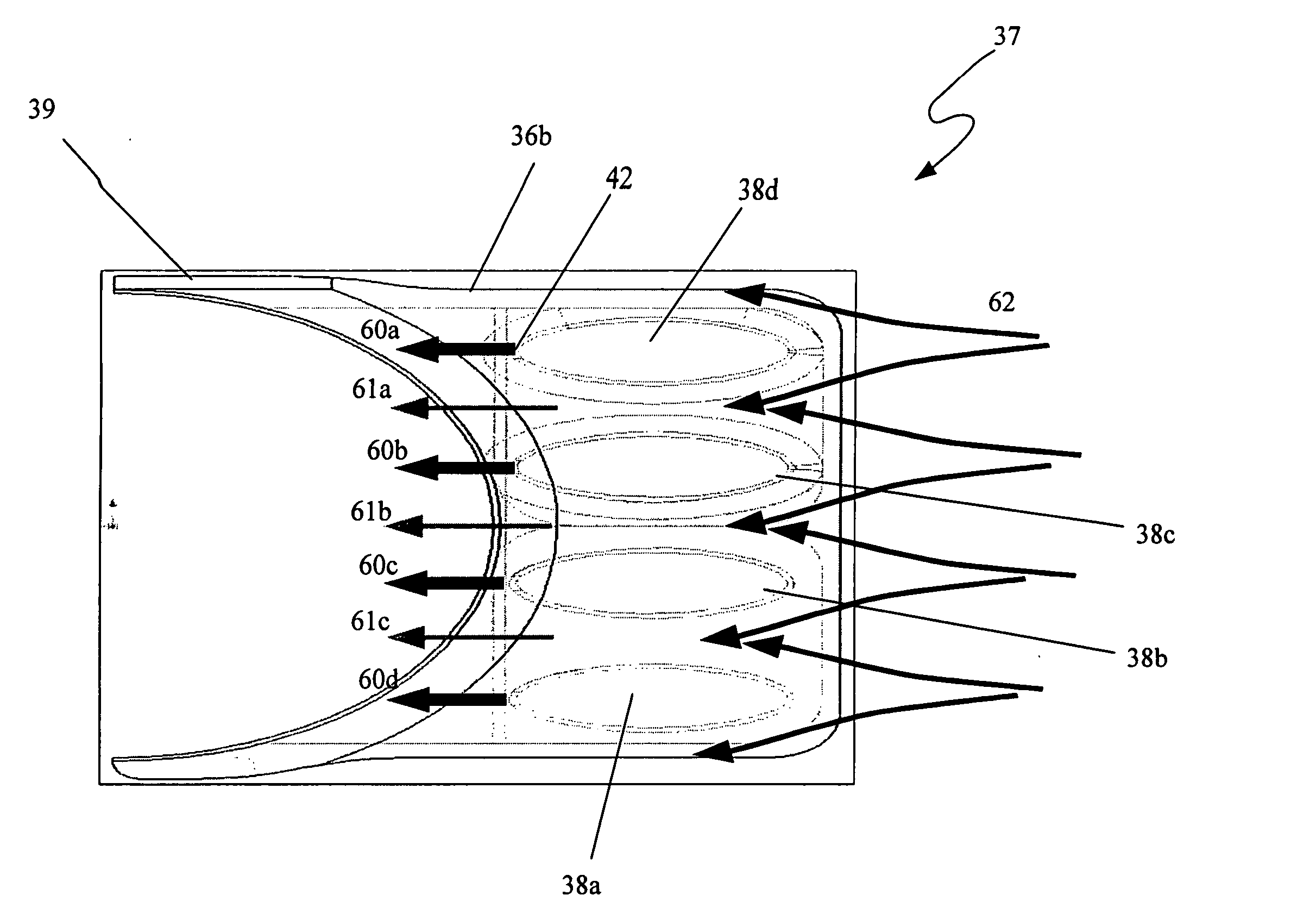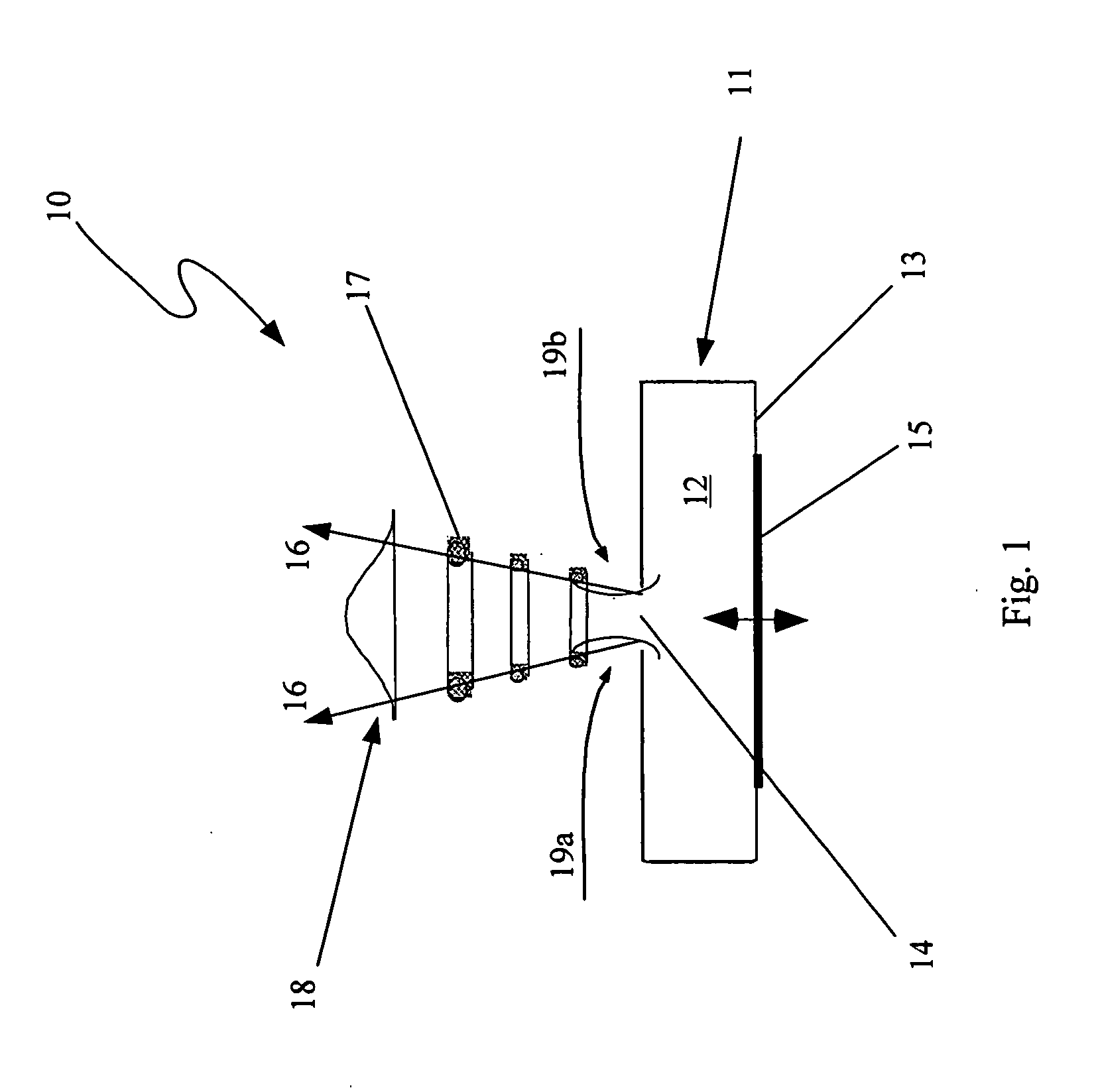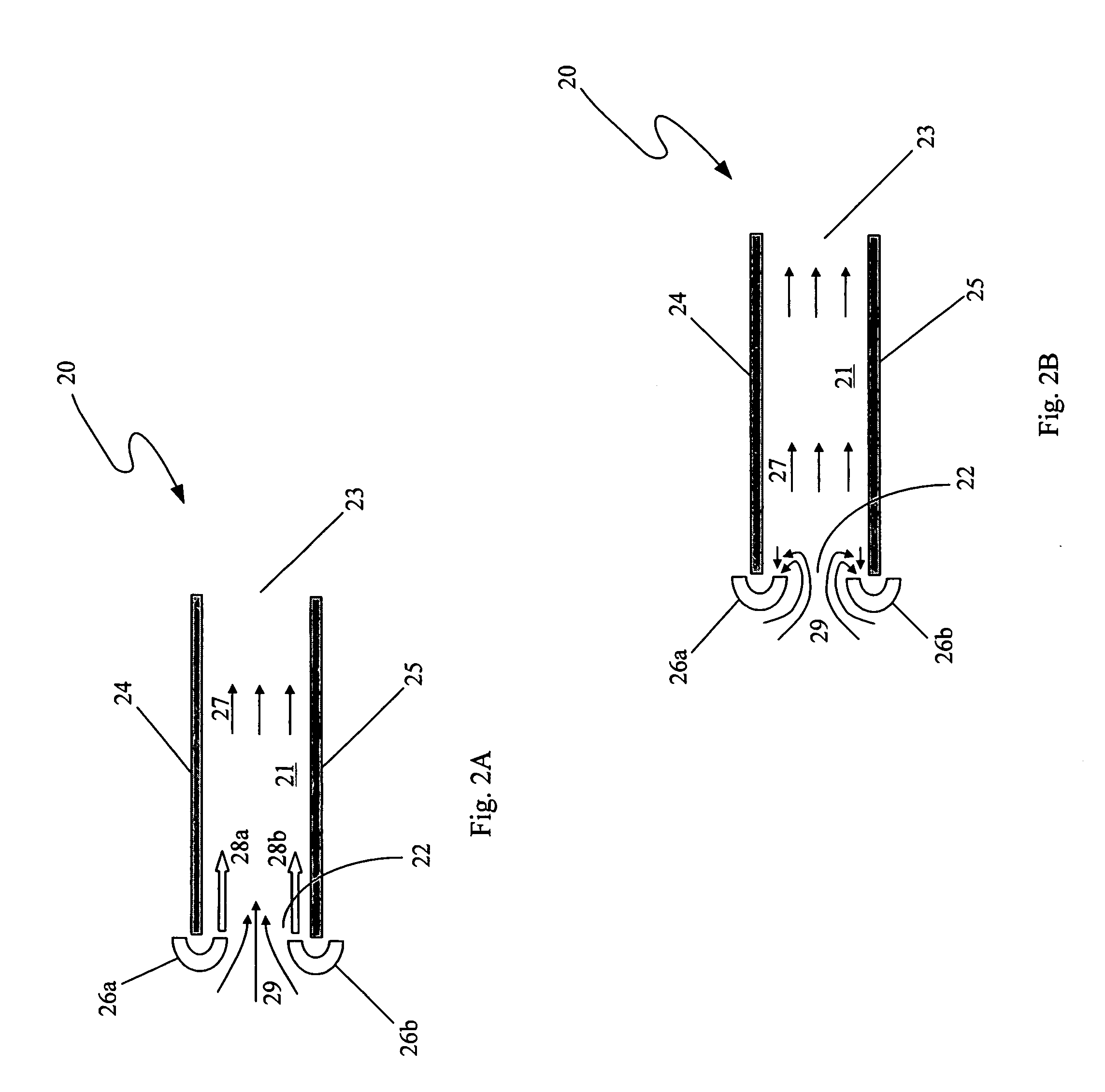Apparatus and method for enhanced heat transfer
a technology of enhanced heat transfer and apparatus, applied in lighting and heating apparatus, electrical apparatus, cooling/ventilation/heating modification, etc., can solve the problems of noisy, unreliable, and generally very inefficient heat removal, and the conventional air-jet is not very useful for consumer products
- Summary
- Abstract
- Description
- Claims
- Application Information
AI Technical Summary
Problems solved by technology
Method used
Image
Examples
first embodiment
Operation of an Active Cooling Module
[0073] In operation, the synthetic jet matrix 32 creates the effect of a jet ejector 20, as discussed above in relation to FIGS. 2A and 2B, between adjacent fins 34 of the heat sink 31. Particularly, the control system causes the pistons in the actuator housings 35a, 36b to oscillate in periodic motion. Preferably, though not required, the pistons are caused to oscillate at a resonant frequency of the system 30.
[0074] The oscillation of the pistons causes the volumes of the chambers in the actuator housings 36a, 36b to be alternatively increased and decreased. As the chamber volume is increased, fluid is pulled in through the orifices 42 fluidically connected to the specific chamber having its volume increased. Then, as the volume of that chamber is decreased, due to the periodic motion of the piston 53, fluid is ejected from the orifices 42 connected to that chamber such that a synthetic jet stream of fluid is formed at the orifice 42. Basicall...
PUM
 Login to View More
Login to View More Abstract
Description
Claims
Application Information
 Login to View More
Login to View More - R&D
- Intellectual Property
- Life Sciences
- Materials
- Tech Scout
- Unparalleled Data Quality
- Higher Quality Content
- 60% Fewer Hallucinations
Browse by: Latest US Patents, China's latest patents, Technical Efficacy Thesaurus, Application Domain, Technology Topic, Popular Technical Reports.
© 2025 PatSnap. All rights reserved.Legal|Privacy policy|Modern Slavery Act Transparency Statement|Sitemap|About US| Contact US: help@patsnap.com



